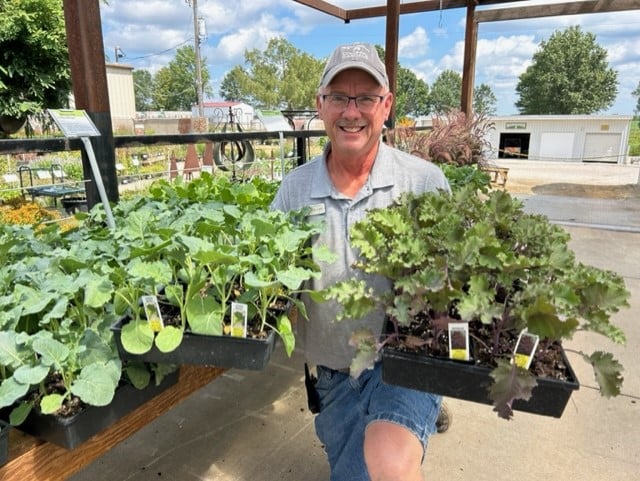Knowing when to plant early spring vegetable plants can be tricky. Mother Nature does not always play nice, like this February & March. We have had days near 80°, then next night it is 15°, then near 80° again. How and when do I or don’t I protect my plants from Mother Nature? What do I need to do to prepare my garden for harvest success? This blog will help you understand better how to grow and be more successful at growing great early spring vegetable plants that produce!
Always Start with the Soil
A plant can only be as healthy as the soil is fertile. February or early March is the time to get the garden soil ready for planting. Add compost, homemade or purchased, either or both are great to increase soil health. If you need to purchase soil amendments, I recommend Phat KAT that we sell here at Colonial Gardens for amending garden soil or for starting a new garden or raised beds. It contains 50% topsoil and 50% compost. It is very loose and full of millions of beneficial fungi, bacteria, soil microbes and mycorrhizae, which are great for plant health, growth, yield, and food flavor!
What is the best way to start my plants?
Grow my own from seed or purchase plants already started? If you want to grow your own seeds, you can start them indoors or directly in the garden soil. Planting seeds outside directly in the garden should be done anytime from early to late-March. I recommend this mainly for the leafy greens, like lettuce and spinach, as they grow very fast. If you are growing head type items, like cabbage, cauliflower, brussels sprouts, etc., they need to be started ahead of time, usually around early February. The challenge is to acclimate them to the outdoor conditions before planting them in ground mid-to end of March. We can eliminate that challenge for you! Purchase our already growing vegetable starts. We start the seeds in a warm greenhouse. When the true leaves are present, then we transplant them to packs or pots and continue to grow them around 60-75° until rooted into the pack or pot.
The next step is the big key, the acclimation process. We will put our starts outside as early as late February to get them used to the cool outdoor conditions. We move them out on a nice day, several days before a cool spell. We will purposely let the plants sustain temperatures at or slightly below freezing before we put them out for sale! Not all veggies can take this treatment. Some that can are: cabbage, broccoli, cauliflower, lettuce, spinach, brussels sprouts, onion plant starts, Swiss chard, beets, kale, peas and radishes. We want to grow for our customers the best and toughest plants possible to help you be successful!
You can do the same with your seedlings to accomplish the same results. Another advantage is the plants you or I grow are local, not shipped across the country or globe, and we know we did not use any harmful treatments on the plants either! Peace of mind is important when talking about what we are eating!
When is it Too Cold
When do I need to cover the plants during very cold weather and what do I cover them with? There are several things to do ahead of a cold spell. First, make sure the ground is moist! Moist soil maintains heat longer than dry soil. If the temps are at or above 30 degrees, and there is no frost potential, you do not need to cover well acclimated early season vegetable starter plants.
If there is a potential for frost, cover them. Frost burns the chlorophyl in the leaves, therefore greatly compromising photosynthesis capability and the viability and productivity of the plant. When you cover them, do not use a single layer of plastic, as frost can go through plastic. Use something thick, like a blanket that is propped up by a stick so as not to lay on the foliage. Put it on an hour or so before sunset to trap the ground heat. If temps are extremely cold (below 25 degrees), then put more than one layer of cloth or blankets. The ground constantly gives off heat, so trap as much heat as you possibly can!
The final item for success is fertility. I like to think the plants I am growing are like a teenage football player who eats a lot. I want them to be big healthy plants that can produce big yields! Using organic fertilizers is recommended for food crops. Check out the Espoma line of fertilizers when growing food!
I hope this information will greatly help you grow lots of healthy food in your own backyard!
Written By "Rockin' Kev" Kevin Keilig


